All Available Episode
All Season 2 Episode
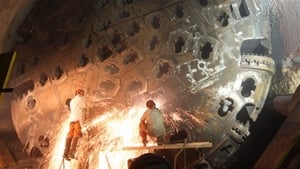
1. Tunnel
Unearth the technological leaps forward that have allowed the world's longest tunnel - the Gotthard Base Tunnel - to be built. The Gotthard Base Tunnel stretches 57 kilometres through the heart of the Swiss Alps. It is deeper than any other tunnel on Earth and paves the way for a vital high-speed rail link between Zurich and Milan. 2000 workers and four gigantic tunnel boring machines work flat-out to excavate 24 million tonnes of mountain rock to complete the tunnel. Explore how this structure was made possible through a series of six engineering breakthroughs. See how six landmark tunnels - including the Thames Tunnel and Channel Tunnel - each feature an ingenious technological innovation that have enabled tunnels to grow ever longer.

2. Submarine
At 171 m long, the USS Pennsylvania is the biggest submarine in the US Navy. It can dive deeper than a thousand feet, sail for 20 years without refuelling, and remain submerged for up to six months. The vessel carries a crew of 155 men and a deadly nuclear arsenal. Uncover the innovations in six landmark submarines, including the tiny Turtle and colossal German U-boats, that made it possible for engineers to incorporate underwater breathing, torpedos, missile launch systems and stealth technology into ever bigger submarines.

3. Aircraft
Continuing this week is the factual series that examines the evolution of modern engineering. The third instalment explores the leaps in aviation technology that led to the development of the world’s largest cargo plane – the Antonov An-124. Weighing in at 392 tons, the Antonov An-124 can carry tanks, trains and even other aircraft to the farthest corners of the globe. The pinnacle of modern aeronautical engineering, this gigantic cargo plane owes its existence to nearly 100 years of innovation...
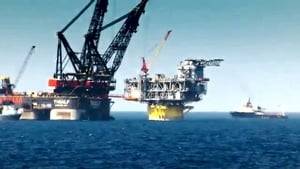
4. Oil Rig
Uncover the technological leaps forward that allowed the world's largest Oil Platform - the Perdido Spar in the Gulf of Mexico - to be built. The Perdido Spar sits in deeper water than any other oil platform, in an ocean over two kilometres deep. This floating factory is capable of drilling in any direction, and in depths of up to three kilometres below the sea floor. At maximum production it can generate enough oil daily to fill 132,000 cars with petrol. Count down the six technological leaps in landmark oil platforms like the Beryl Alpha platform, that enabled this, the world's largest oil platform, to be built and survive in ever deeper waters.

5. Sky Wheel
Uncover the technological leaps forward that have enabled the world's largest observation wheel - the Singapore Flyer - to be built. The Singapore Flyer is the tallest observation wheel on Earth, rising 165 metres into the sky. It can whisk 1,260 passengers around hourly to see a stunning 45 km panorama of three different countries below. Count down the five major innovations in observation wheels like the original Ferris Wheel and London Eye that have allowed the world's highest observation wheel to be built.

6. Space Station
Explore the giant technological leaps forward that have enabled the world's biggest space station to be built. The International Space Station orbits 350 kilometres above our heads, hurtling around the Earth at almost 30,000 kilometres an hour. It is one of the greatest engineering feats of all time. Its crew performs vital experiments that will one day allow humans to live permanently in space. A test bed for future missions deeper into space, the space station could enable future generations to journey throughout the Solar System or even live on Mars. Five landmark space stations contributed innovations to allow engineers to build bigger, making it possible to explore the wonders of space travel and push the boundaries of science ever farther.
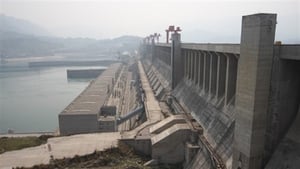
7. Dam
Filter through the technological leaps forward that have allowed the world's largest hydroelectric dam - the Three Gorges Dam in China - to be built. The Dam harnesses the power of China's great Yangtze River. It is over two kilometres long, towers over 60 storeys high and creates a reservoir 600 kilometres in length. On completion the scheme will be able to generate 22,500 megawatts of power - enough to supply electricity to 60 million people. At its peak, over 25,000 men and women were working round the clock to make what was once Chairman Mao's dream a reality. Explore how this immense project was made possible through a series of breakthroughs on six landmark dams - including the Hoover Dam in America. Each features a major technological innovation that allowed engineers to create bigger dams to generate ever more hydroelectric power.

8. Cruise Ship
Uncover the technological leaps that allowed the world's biggest cruise ship - the Independence of the Seas - to be developed. The ship cost US$800 million to build, carries her passengers in unrivalled luxury and is manned by a crew of 1,360 who occupy a vast behind-the-scenes world of control rooms, kitchens and engine spaces. Longer than 5 jumbo jets and weighing more than 80,000 family cars, explore how this gargantuan ship was made possible through a series of six historic breakthroughs on liners such as the SS Great Britain and RMS Queen Mary, that allowed engineers to build ever-larger ships.
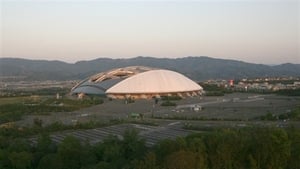
9. Dome
Uncover the technological leaps forward that allowed the world's largest spanning dome - the Oita Stadium in Japan - to be built. The Oita's colossal roof spans a mighty 274 metres. A steel, Teflon and titanium structure over 270 metres across and 60 metres high, the Oita Stadium roof covers a sports stadium big enough to seat 43 thousand spectators. At the flick of a switch its seats retract to reveal a running track and its roof opens and closes like a giant eye. Count down the technological leaps in six landmark domes including Rome's Pantheon and Florence's Cathedral, that allowed this, the world's largest spanning dome, to be built.
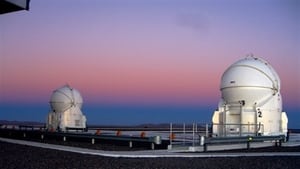
10. Telescope
Zoom in on the technological leaps forward that have enabled the world's largest telescope - the Large Binocular Telescope - to be built. The telescope sits on a mountain in Arizona, over 3,000 metres above sea level. Like a giant pair of eyes, it stares up into the night sky. Equipped with two giant mirrors, it allows astronomers to see further into space than ever before. Capable of producing images of heavenly bodies with startling clarity, the LBT focuses its two giant mirrors on stars tens of millions of light years away from Earth. Explore how innovative engineering breakthroughs on six landmark telescopes contributed towards the development of this magnificent instrument, allowing astronomers to see ever deeper into space and uncover more about our universe.
